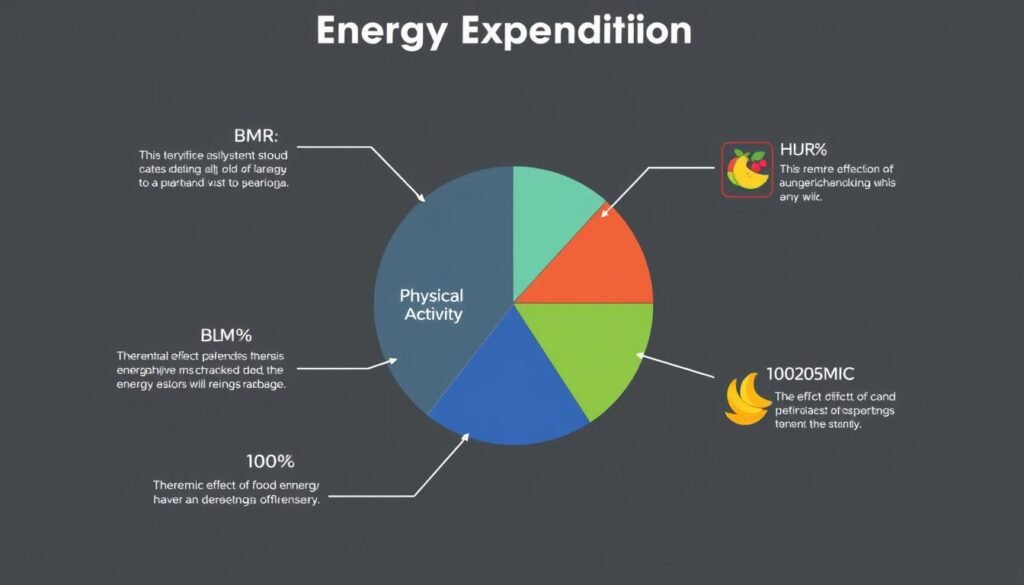Use our BMR Calculator to find your Basal Metabolic Rate and understand how many calories your body needs at rest. Optimize your diet and fitness plan today.
Your Metabolic Rate Report
Basic Information
Age:
Gender:
Height:
Weight:
Metabolic Rates
BMR: calories/day
TDEE: calories/day
Health Insights
Recommendations
Understanding your body’s energy needs is crucial for effective weight management and overall health. Your Basal Metabolic Rate (BMR) represents the minimum energy your body requires to perform essential functions while at rest. By calculating your BMR, you gain valuable insights into your daily caloric needs, which serves as the foundation for any successful weight loss, maintenance, or muscle-building plan.
Our comprehensive guide explains what BMR is, how it’s calculated, and most importantly, how you can use this knowledge to achieve your health and fitness goals. Try our interactive BMR calculator below to discover your personal metabolic rate and learn how to apply this information effectively.
What Is BMR?
Basal Metabolic Rate (BMR) represents the minimum amount of energy your body needs to perform essential functions while at complete rest. These functions include breathing, blood circulation, cell production, nutrient processing, and maintaining body temperature.

Think of BMR as the amount of fuel your body burns while doing absolutely nothing—like when you’re sleeping. For most people, BMR accounts for approximately 60-75% of their total daily energy expenditure, making it the largest component of your calorie-burning equation.
Your BMR is like your body’s idling engine—it’s the energy required to keep your systems running even when you’re completely at rest.
Understanding your BMR provides a baseline for determining your total daily energy needs, which is essential for effective weight management. Without this knowledge, you might underestimate or overestimate your caloric requirements, making it difficult to achieve your health and fitness goals.
BMR vs. TDEE: Understanding the Difference
While BMR measures the calories your body needs at complete rest, Total Daily Energy Expenditure (TDEE) accounts for all the energy you use throughout the day, including physical activity and food digestion.
Basal Metabolic Rate (BMR)
- Energy needed for basic bodily functions
- Measured at complete rest
- Accounts for 60-75% of total calories burned
- Doesn’t include activity or digestion
- Foundation for calculating total energy needs
Total Daily Energy Expenditure (TDEE)
- Total calories burned throughout the day
- Includes BMR plus all activities
- Accounts for exercise and daily movement
- Includes thermic effect of food (digestion)
- Used for weight management planning

To calculate your TDEE, you multiply your BMR by an activity factor that corresponds to your typical level of physical activity:
| Activity Level | Description | Multiplier |
| Sedentary | Little or no exercise | BMR × 1.2 |
| Lightly Active | Light exercise 1-3 days/week | BMR × 1.375 |
| Moderately Active | Moderate exercise 3-5 days/week | BMR × 1.55 |
| Very Active | Hard exercise 6-7 days/week | BMR × 1.725 |
| Extra Active | Very hard exercise & physical job | BMR × 1.9 |
For effective weight management, you need to understand both your BMR and TDEE. Your BMR tells you the minimum calories required, while your TDEE helps you determine how many calories to consume based on your activity level and goals.
BMR Calculation Methods: The Science Behind the Numbers
Several scientific formulas have been developed to calculate BMR. Each uses different variables and was developed through research on different populations. Our calculator uses the Mifflin-St Jeor equation, which is considered the most accurate for most people.

The Mifflin-St Jeor Equation
Developed in 1990, this is currently considered the most accurate formula for calculating BMR:
For men: BMR = (10 × weight in kg) + (6.25 × height in cm) – (5 × age in years) + 5
For women: BMR = (10 × weight in kg) + (6.25 × height in cm) – (5 × age in years) – 161
The Harris-Benedict Equation
This older equation was developed in 1919 and revised in 1984:
For men: BMR = 13.397 × weight in kg + 4.799 × height in cm – 5.677 × age in years + 88.362
For women: BMR = 9.247 × weight in kg + 3.098 × height in cm – 4.330 × age in years + 447.593
The Katch-McArdle Formula
This formula takes lean body mass into account, making it potentially more accurate for athletic individuals who know their body fat percentage:
For men and women: BMR = 370 + (21.6 × lean body mass in kg)
Where lean body mass = weight in kg × (1 – body fat percentage/100)
Each formula has its strengths and limitations. The Mifflin-St Jeor equation is generally recommended for most people, while the Katch-McArdle formula may be better for athletes with known body fat percentages. The Harris-Benedict equation tends to overestimate BMR slightly.
Factors That Affect Your BMR
Your basal metabolic rate isn’t fixed—it’s influenced by various factors, some within your control and others not. Understanding these factors can help you interpret your BMR results and make appropriate lifestyle adjustments.
Biological Factors
- Age: BMR typically decreases by 1-2% per decade after age 20
- Gender: Men generally have higher BMRs than women due to greater muscle mass
- Genetics: Inherited traits can influence metabolic efficiency
- Body Composition: More muscle mass means higher BMR
- Hormones: Thyroid function significantly impacts metabolic rate
Environmental Factors
- Temperature: Cold environments can temporarily increase BMR
- Climate: Adaptation to different climates affects energy needs
- Altitude: Higher altitudes can increase BMR initially
- Stress: Chronic stress can alter hormonal balance affecting BMR
- Sleep: Poor sleep quality can reduce metabolic efficiency
Lifestyle Factors
- Diet: Severe calorie restriction can lower BMR
- Meal Timing: Regular meals may support metabolic function
- Exercise: Regular strength training increases muscle mass and BMR
- Hydration: Proper hydration supports metabolic processes
- Stimulants: Caffeine can temporarily increase metabolic rate
While you can’t change factors like age and genetics, focusing on modifiable aspects like exercise, diet quality, and sleep can help optimize your metabolic function.
Understanding these factors helps explain why BMR varies between individuals and why your own BMR might change over time. By recognizing which factors you can influence, you can make informed decisions about your health and fitness strategies.
BMR Calculation Examples
To help you better understand how BMR calculations work in practice, let’s look at some examples using the Mifflin-St Jeor equation.

Example 1: 30-year-old Male
- Age: 30 years
- Height: 5’10” (178 cm)
- Weight: 180 lbs (81.8 kg)
- Activity level: Moderately active
BMR Calculation:
(10 × 81.8) + (6.25 × 178) – (5 × 30) + 5
= 818 + 1,112.5 – 150 + 5
= 1,785.5 calories/day
TDEE Calculation:
1,785.5 × 1.55 (moderately active) = 2,767.5 calories/day
Example 2: 45-year-old Female
- Age: 45 years
- Height: 5’5″ (165 cm)
- Weight: 140 lbs (63.5 kg)
- Activity level: Lightly active
BMR Calculation:
(10 × 63.5) + (6.25 × 165) – (5 × 45) – 161
= 635 + 1,031.25 – 225 – 161
= 1,280.25 calories/day
TDEE Calculation:
1,280.25 × 1.375 (lightly active) = 1,760.3 calories/day
These examples demonstrate how factors like age, gender, weight, height, and activity level significantly impact both BMR and total daily energy needs. Notice that the male example has a higher BMR despite being younger and having a higher activity level, illustrating the influence of gender and body composition on metabolic rate.
Practical Applications of Your BMR
Once you’ve calculated your BMR and TDEE, you can apply this knowledge to various health and fitness goals. Understanding your energy requirements provides a scientific foundation for effective weight management strategies.

Weight Loss
To lose weight at a healthy rate (1-2 pounds per week), create a moderate calorie deficit:
- Calculate your TDEE (BMR × activity factor)
- Subtract 500-1000 calories per day from your TDEE
- Never consume fewer calories than your BMR
- Combine dietary changes with increased physical activity
- Monitor progress and adjust as needed
Consuming fewer calories than your BMR for extended periods can slow your metabolism and lead to nutritional deficiencies. Always consult with a healthcare provider before starting any significant calorie restriction.
Weight Maintenance
After reaching your goal weight, adjust your intake to maintain your weight:
- Consume approximately the same number of calories as your TDEE
- Continue monitoring your weight regularly
- Make small adjustments (±100-200 calories) as needed
- Recalculate your BMR periodically as your body composition changes
Muscle Gain
To build muscle effectively, you need a slight calorie surplus:
- Add 300-500 calories to your TDEE
- Ensure adequate protein intake (1.6-2.2g per kg of body weight)
- Implement progressive resistance training
- Monitor body composition rather than just weight
By using your BMR as a starting point, you can create personalized nutrition and exercise plans that align with your specific goals. Remember that BMR calculations provide estimates—you may need to adjust based on your individual response and progress.
9 Ways to Increase Your Metabolic Rate Naturally
While some aspects of your BMR are determined by genetics and age, there are several evidence-based strategies to optimize your metabolic function naturally.

1. Build Muscle Mass
Muscle tissue burns more calories at rest than fat tissue. Incorporating regular strength training (2-3 times per week) can increase your BMR by building lean muscle mass.
2. High-Intensity Interval Training
HIIT workouts can create an “afterburn effect” (excess post-exercise oxygen consumption) that elevates your metabolic rate for hours after exercise.
3. Eat Sufficient Protein
Protein has a higher thermic effect than carbs or fats, meaning your body burns more calories digesting it. Aim for 20-30g of protein per meal.
4. Stay Hydrated
Studies suggest that drinking cold water can temporarily boost metabolism by up to 30% as your body uses energy to warm the water to body temperature.
5. Get Adequate Sleep
Poor sleep disrupts hormones that regulate metabolism. Aim for 7-9 hours of quality sleep per night to support optimal metabolic function.
6. Manage Stress
Chronic stress increases cortisol, which can slow metabolism and promote fat storage. Regular stress-reduction practices like meditation can help.
7. Avoid Severe Calorie Restriction
Drastically cutting calories can signal your body to conserve energy, slowing your metabolism. Moderate deficits of 500-600 calories are more effective long-term.
8. Drink Green Tea or Coffee
The caffeine and catechins in these beverages can temporarily increase metabolic rate by 3-11%, supporting fat oxidation.
9. Eat Regular Meals
Some research suggests that eating at consistent times helps maintain metabolic efficiency. Avoid skipping meals, especially breakfast.

Remember that sustainable lifestyle changes yield better results than quick fixes. Focus on building healthy habits that support your metabolic health over the long term rather than seeking dramatic short-term changes.
Common Misconceptions About BMR and Metabolism
There are many myths surrounding metabolism and BMR that can lead to confusion and ineffective strategies. Let’s clarify some of the most common misconceptions.

Myth: Metabolism completely slows down after 30
Fact: While metabolic rate does gradually decline with age (about 1-2% per decade after 20), this is primarily due to loss of muscle mass rather than age itself. Regular strength training can significantly offset this decline by preserving or even increasing muscle tissue.
Myth: Eating small, frequent meals “stokes” your metabolism
Fact: Research shows that meal frequency has minimal impact on overall metabolic rate. What matters most is your total daily caloric intake and macronutrient balance. Some people may function better with smaller, frequent meals, while others do well with fewer, larger meals.
Myth: Some people have naturally “fast” or “slow” metabolisms
Fact: While there is some genetic variation in metabolic rate (typically within a range of 5-8%), dramatic differences in metabolism between similar individuals are rare. What often appears as a “fast metabolism” is usually explained by differences in non-exercise activity thermogenesis (NEAT)—the calories burned through fidgeting, pacing, and other unconscious movements.
Myth: Certain foods (like spicy peppers) significantly boost metabolism
Fact: While some foods and compounds (caffeine, capsaicin) can temporarily increase metabolic rate, the effect is modest (3-8%) and short-lived. These effects are too small to significantly impact weight management without other interventions.
Myth: BMR calculators provide exact measurements
Fact: Even the most accurate BMR formulas provide estimates with a margin of error of approximately 10%. True BMR can only be precisely measured in laboratory settings using indirect calorimetry. Use calculator results as a starting point and adjust based on your body’s actual response.
Understanding these misconceptions can help you develop more realistic expectations and effective strategies for managing your metabolic health. Focus on evidence-based approaches like building muscle, staying active, and maintaining adequate nutrition rather than quick fixes or fad approaches.
Taking Action With Your BMR Knowledge
Now that you understand what BMR is, how it’s calculated, and the factors that influence it, you’re equipped to make informed decisions about your nutrition and exercise plans. Your BMR provides a scientific foundation for setting realistic goals and creating effective strategies for weight management.

Remember these key takeaways:
- Your BMR is the baseline for understanding your energy needs
- Combine your BMR with your activity level to determine your total daily energy expenditure
- Create moderate calorie deficits for sustainable weight loss
- Focus on building muscle to naturally increase your metabolic rate
- Recalculate your BMR periodically as your body composition changes
Start Your Personalized Weight Management Journey Today
Use our BMR calculator above to determine your personal metabolic rate, then apply this knowledge to create a customized nutrition and exercise plan that aligns with your specific goals.
By understanding and applying the science of metabolic rate, you’re taking an important step toward evidence-based health management. Whether your goal is weight loss, maintenance, or muscle gain, your BMR knowledge provides the foundation for success.
